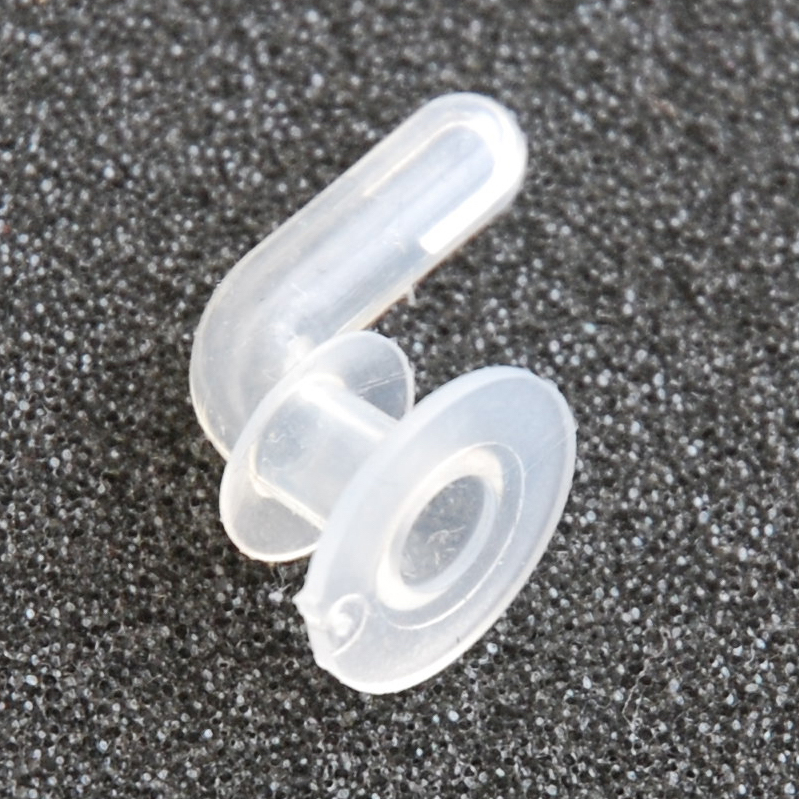Eska® Herrmann
Clinical application
The Eska® Herrmann prosthesis was developed for insertion in a surgically created, so called "tracheal chimney". It can also be introduced without a tracheal chimney and is available in various bends. The comparatively small inner diameter creates a higher airflow resistance. The bill valve is stable against underpressure related valve openings.
| Type of prosthesis: | High-resistance non-indwelling/indwelling prosthesis |
|---|---|
| Outer diameter of shaft: | 5.5 mm |
| Shaft lengths: | can be manufactured individually |
| Shaft curvatures: | 60°, 75°, 90° |
| Material: | medical-grade silicone and metal tubes |
| Valve type: | bill valve |
| Method of insertion: | anterograde with carrier |
| Indication: | special prosthesis, e.g. for "tracheal chimney" |
| Biofilm resistance: | no |
| Underpressure stability: | yes |
| Non-fatiguing valve mechanism: | no |
| Prevalence: | local |
Literature
1. Schultz-Coulon HJ., Medical after-care of laryngectomized patients with voice prosthesis,
HNO. 1993 Dec;41(12):597-608. Review. German.
2. Herrmann IF., Secondary surgical voice rehabilitation], HNO. 1987 Aug;35(8):351-4.
3. Issing WJ, Fuchshuber S, Wehner M., Incidence of tracheo-oesophageal fistulas after primary voice rehabilitation with the Provox or the Eska-Herrmann voice prosthesis., Eur Arch Otorhinolaryngol. 2001 Jul;258(5):240-2.

